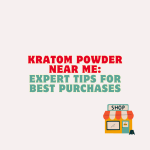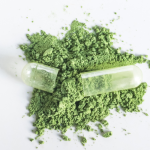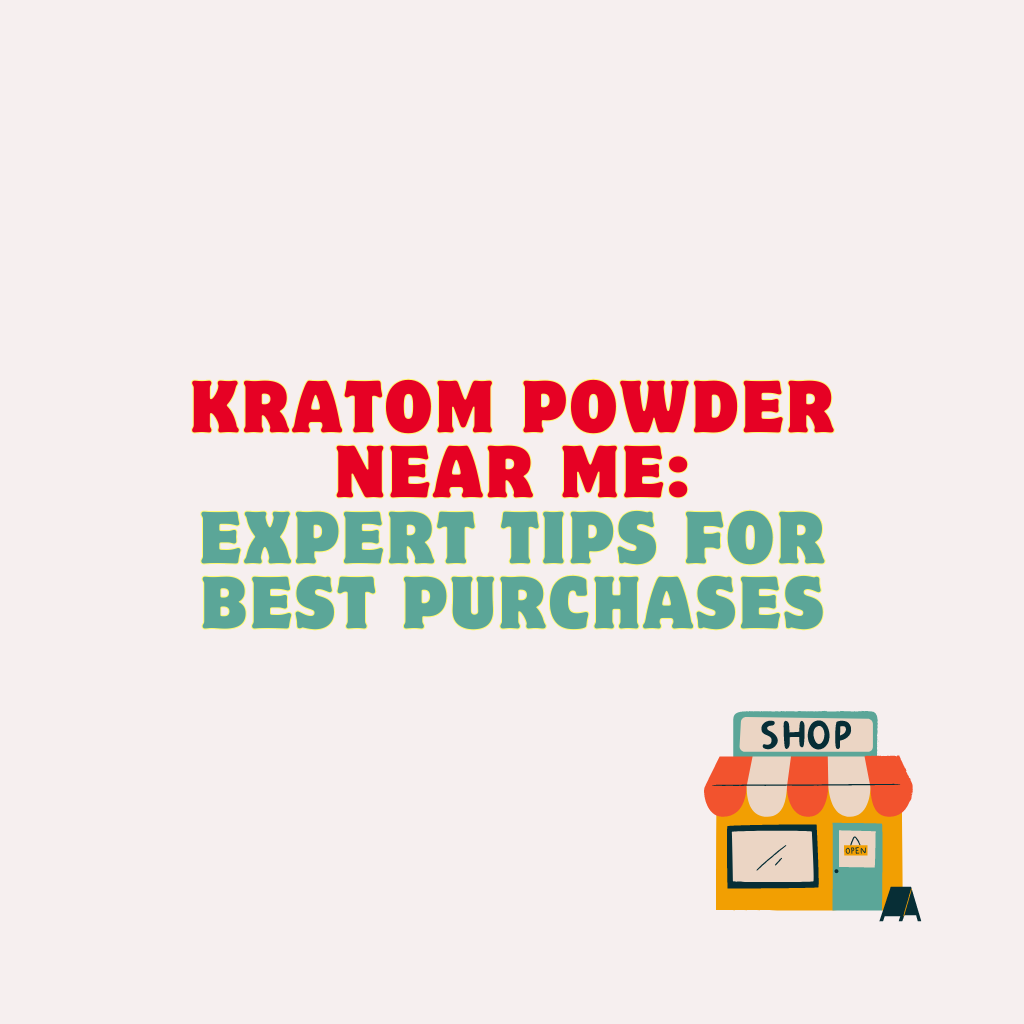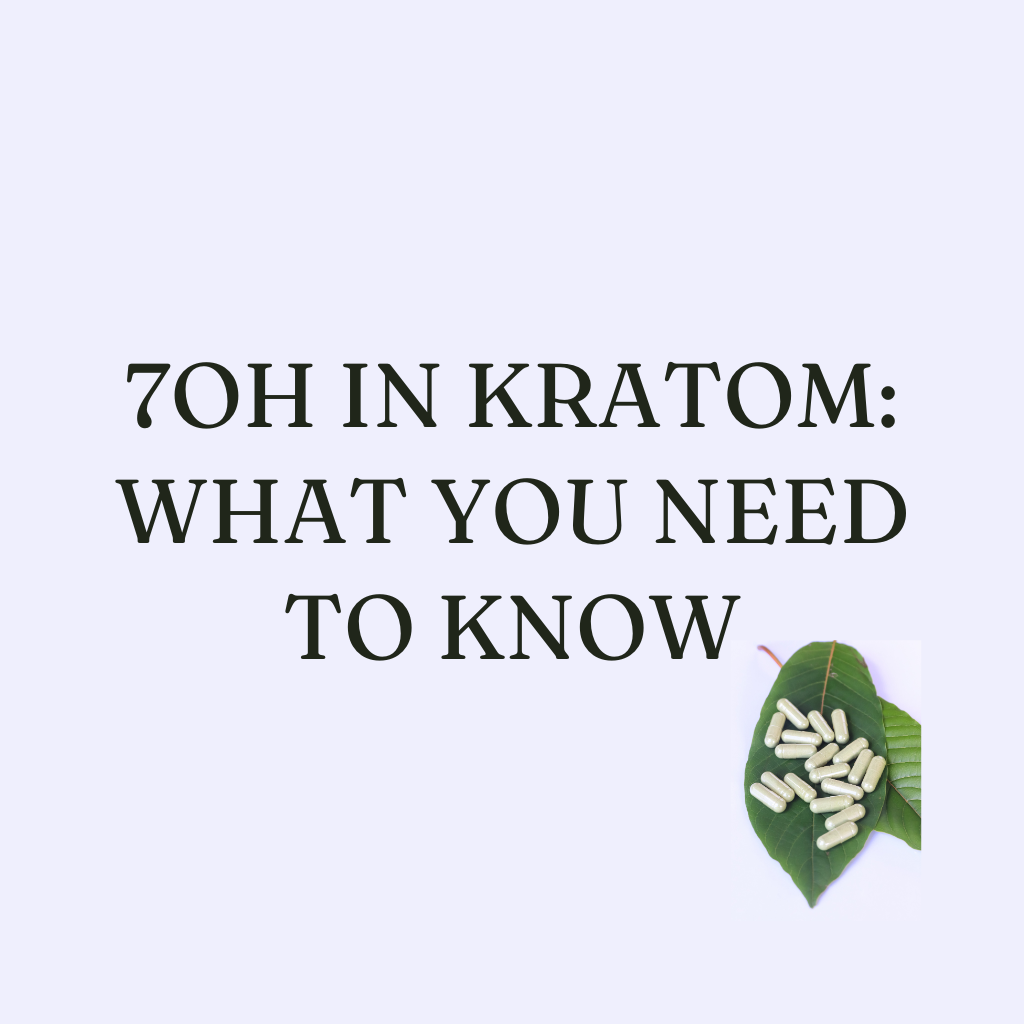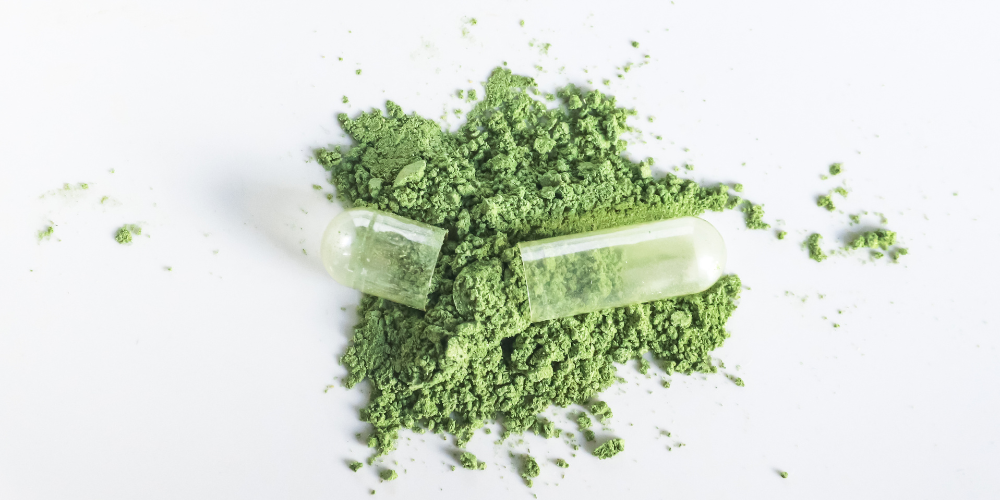
Free Shipping on Orders Over $75!
JOIN OUR EMAIL LIST FOR 20% OFF, weekly coupons up to 30% OFF
Signs of Kratom Withdrawal: Detox, Treatment, Symptoms

Kratom is an herb used by many to manage their symptoms of discomfort, opioid withdrawals, and certain mental health conditions. Used in moderation, it can be a beneficial herb, but it also comes with certain signs of kratom withdrawal if abused.
The effects of kratom withdrawal includes both physical and psychological symptoms. The most common physical symptoms include muscle aches, joint and bone pain, involuntary jerky movements of the extremities, and, in rare cases, seizures. Psychological symptoms include insomnia, anxiety, depression, agitation, and other mood changes.
I you think you may be experiencing kratom withdrawal? Read on to find a more in-depth discussion of withdrawal symptoms and a synopsis of what to expect during the detox process.
How to Tell if You’re Going Through Kratom Withdrawal

If you’ve been consuming large amounts of kratom and suddenly stopped or cut back on your use, you may experience withdrawal. Kratom withdrawal only occurs if you are physiologically dependent on the chemical substances it contains. Each time you take a kratom dose, it alters your brain chemistry and triggers specific chemical processes in your body. Over time, your body will rely on those processes to feel normal.
You don’t have to be genuinely addicted to kratom to go through withdrawal. Addiction, referred to medically as a substance use disorder, goes beyond physiological dependence. By definition, a substance use disorder includes psychological symptoms like the inability to stop or cut back on using a substance even when it harms other aspects of your life.
Whether you’re addicted to kratom or not, withdrawal symptoms can be uncomfortable, or even painful. They are rarely dangerous, though, so you should not have to worry about experiencing severe health complications. If you choose to detox at home, it can help to know what to expect. When they detox from kratom, some users experience one or more of these physical symptoms:
- Muscle aches
- Jerky movements
- Runny nose
- Watery eyes
- Abdominal cramping, which can be severe
- Nausea
- Vomiting
- Diarrhea
- Pupil dilation
- Blurred vision
- Hot flashes
- Fever
- Decreased appetite
- Changes in heart rate
- Changes in blood pressure
- Seizures (rare)
You may also experience worrisome psychological symptoms, such as:
- Insomnia
- Irritability
- Mood swings
- Anxiety
- Depression
- Agitation
- Hostility
Most of these symptoms will resolve by themselves within around three days of your last dose, although those who have been taking a lot of kratoms may experience acute withdrawal symptoms for up to a week or longer.
Some long-term, heavy users may also experience what’s known as post-acute withdrawal syndrome, or PAWS. If this happens to you, expect to experience occasional psychological distress waves or even renewed physical symptoms. Don’t worry, though. The waves will pass quickly, and you’ll be feeling back to your usual self within a few weeks to several months.
How to Cope with Kratom Symptoms
Quitting kratom can be difficult for some people, but you have plenty of options when it comes to coping with the symptoms of withdrawal. If you want to quit at home, you can either go cold-turkey or slowly taper down your doses over several weeks. Each of these strategies has its advantages.
Gently tapering off of kratom can make the withdrawal symptoms more manageable. It also prolongs the unpleasantness, though. Since the withdrawal symptoms only last around three days, many people prefer to quit cold-turkey to get the suffering over with.
Regardless of which strategy you choose, there are a few ways you can make the entire process more tolerable. Here are a few tips that might help:
- Use over-the-counter medications such as antidiarrheals, sleep aids, and pain relievers to ease the symptoms’ worst.
- Take hot showers to boost your mood and soothe your muscle soreness.
- Get outside for a walk to distract yourself from cravings and reduce tension.
- Eat healthy foods that will help your body recover from your substance use and withdrawal symptoms faster. Fruits high in antioxidants can help with muscle cramps. Whole grains can alleviate problems with constipation or diarrhea. Ginger can soothe upset stomachs.
- Stay busy by making plans with supportive, sober friends.
- Make a list of reasons to quit to remind yourself that the pain and suffering will be worth it.
- Speak to your doctor about your concerns before quitting. Explain that you expect to experience symptoms similar to those associated with opioid withdrawal and see if you can get prescription detox medications to help with nausea, diarrhea, and anxiety.
How Long Does Kratom Stay in Your System?
Most users report feeling the effects of kratom for around seven hours after they take their doses. The alkaloids found in kratom will stay in your body well after you stop feeling the results, though. They can still be detected in plasma at least 24 hours after your last dose.
The fact that this herb has yet to undergo substantial clinical testing means researchers have yet to reach a consensus regarding more objective measurements like the half-life for mitragynine, the primary ingredient found in kratom. One study estimated the average half-life of mitragynine to be around 3.85 hours. Another found that participants’ bodies took 9.43 hours to eliminate half the mitragynine in their systems.
The elimination half-life of kratom is affected by how you choose to use it. Most people ingest kratom orally in the form of tea or powder mixed in water. In these cases, the half-life should be around 6.6 hours, on average. The rare few users who inject kratom can expect a much shorter half-life of 2.9 hours. Before anyone gets any ideas, though, injecting kratom is a terrible idea.
How to Detox Your Body of Kratom
Detox refers to the process of eliminating toxins from your body. This process can be undertaken all at once or overtime. The only way to detoxify your body entirely of kratom is to stop using it.
Most users find that they can detox their bodies of kratom at home. They focus on drinking lots of water to flush the toxins from their systems, eating healthy foods, and getting plenty of exercises to help mitigate withdrawal symptoms. There’s also no shame in enlisting professional help through a medical or social detox program. If you’re concerned about severe withdrawal symptoms or have dependencies on other substances, as well, this is the safest way to perform a full detox.

Those who have been using kratom to manage opioid withdrawal symptoms should know that they will be at higher risk of relapse after they detox from kratom. Come up with a plan for how to deal with cravings before tapering down or quitting cold-turkey. Opioid relapses can be incredibly dangerous, or even fatal, so it’s highly recommended that you speak with an addiction counselor before leaving kratom.
Finding Support For Kratom Withdrawal
Kratom withdrawal can be extremely unpleasant, but there’s no need to go through it alone. Taking advantage of available social and medical resources can make managing withdrawal symptoms much more comfortable. You have a five options when it comes to finding support, so choose the one below that best suits your unique situation.
- Confide in a good friend: If you have a friend who has been through kratom withdrawals, now is the time to reach out. Just having someone supportive to hang out with in a low-stress environment can take the edge off your anxiety. Letting a good friend or two know what you’re going through will also give you someone to call if you’re having trouble managing your cravings or other symptoms alone.
- Find a peer support group: If there are no support groups in your area, try looking online. You don’t need to find a support group just for kratom users. You can also try more generalized options like Narcotics Anonymous.
- Call SAMHSA: SAMHSA, short for the Substance Abuse and Mental Health Services Administration, runs a national helpline for those suffering from substance abuse disorders. It’s confidential, free, and open 24/7 every day of the year. You can get referrals to treatment facilities, information about community-based organizations, and find other forms of local assistance and support.
- Look for a social detox program: Social detox programs can be either in-patient or outpatient programs. Either way, you’ll have access to counselors, peer support groups, and others who can help you navigate your withdrawal’s most challenging stages.
- Attend a medical detox facility: Your detox process will be monitored by trained doctors, nurses, and addiction specialists at a medical detox facility. You’ll have access to medications that can help you combat challenging symptoms and get the counseling you need to develop a good plan for how to avoid relapses in the future. Most people can safely detox from kratom without attending a medical program, but those who are also using other drugs should look into this option.
Did like a post? Share it with:
nimesh
Search
Table of Index
Post Categories
Related Posts
Where to buy kratom near me is a question that many users find themselves asking when looking for quality products
Finding the best Kratom Powder near me can feel difficult with so many options available locally. But steering through stores
Are you one of those scrolling on the internet for ‘7ALKS near me’? Are you looking for 7ALKS, 7-Hydroxy 15mg
7OH, or 7 hydroxymitragynine, is a significant alkaloid found in kratom that plays a crucial role in its effects. This
Curious about 7OH kratom? You’re not alone. As more people explore different botanical products, 7 hydroxymitragynine (7OH) has emerged as
Have you ever accidentally over-consumed kratom and experienced a hangover? Well, the good news is they’re easily avoidable. A kratom
Disclaimer
Must be 21 years or older to purchase kratom. Products are not for internal use. The US FDA Has Not Approved Kratom as a Dietary Supplement. We do not ship to the following states, cities and counties in the US where Kratom is banned Alabama, Arkansas, Indiana, Rhode Island, Tennessee, Vermont, Wisconsin. Sarasota County, Union County, Denver, San Diego. All sales should be 100% U.S. sales only.
Consult with a medical professional before use if taking prescription medication or affected by a serious medical condition. Always seek medical advice before using this or any other supplemental dietary product. These statements have not been evaluated by the Food and Drug Administration (FDA).
© 2025 Kratom Krush. All Rights Reserved.Privacy PolicyTerms & Conditions


